
18-12-2025 21:17
Pol DebaenstThe identification took me to Byssonectria deformi

15-12-2025 07:09
 Danny Newman
Danny Newman
indet. Rutstroemiaceae sp. on unk. fallen leavesMc

19-12-2025 10:10
Patrice TANCHAUDBonjour, récolte réalisée en milieu dunaire, a

18-12-2025 17:23
 Bruno Coué
Bruno Coué
Bonjour,je serais heureux d'avoir votre avis sur c

18-12-2025 18:07
Margot en Geert VullingsThese plumes were found on rotten wood.They strong

17-12-2025 18:35
 Michel Hairaud
Michel Hairaud
Bonjour à tous/Hi to everyone I am passing along

15-12-2025 15:48
 Danny Newman
Danny Newman
Melanospora cf. lagenaria on old, rotting, fallen

15-12-2025 15:54
 Johan Boonefaes
Johan Boonefaes
Unknown anamorph found on the ground in coastal sa

15-12-2025 21:11
 Hardware Tony
Hardware Tony
Small clavate hairs, negative croziers and IKI bb
Ijuhya, striate sp., on herbal stem
Viktorie Halasu,
06-06-2021 11:51
 Hello,
Hello, I couldn't find a name for this Ijuhya in the latest 2019 key.
On an unidentified herbal stem ca 5 mm thick. Riparian lowland forest, clearing under a power line with Reynoutria, Helianthus tuberosus and other tall plants.
Perithecium doesn't react in LA, seems to be one-layered only.
"Crown" without hairs, only very short cylindric cells are protruding on places.
Asci 8-spored. Spores straight, frequently also more or less bent to allantoid, only 1-septate, finely longitudinally striate.
Anamorph present.
Soc. Sarcopodium sp.
Thank you for any help.
Viktorie
Christian Lechat,
06-06-2021 17:13

Re : Ijuhya, striate sp., on herbal stem
Hi Viktorie,
Is the ascomatal apex conical or flat? In the first image it looks rather conical, and if so it is not an Ijuhya species. Ijuhya is characterized by ascomata with a flat discoid
apex pierced by a small, faintly prominent papilla and a one-layered
ascomatal wall covered by hyphal elements arising from base, proliferating
over ascomatal surface and becoming fasciculate to form
teeth arranged in a stellate fringe around upper margin.
apex pierced by a small, faintly prominent papilla and a one-layered
ascomatal wall covered by hyphal elements arising from base, proliferating
over ascomatal surface and becoming fasciculate to form
teeth arranged in a stellate fringe around upper margin.
Maybe You should compare this specimen with the genus Lasionectria, whose ascomata have a conical apex. Lasionectria differs from Ijuhya in having hairs arising from the cells of ascomatal wall, not from base. Al known species of Lasionectria have striate ascospores.
Good luck,
Christian

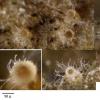
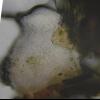
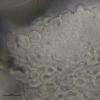
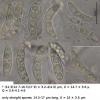
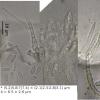
 ornamentation
ornamentation